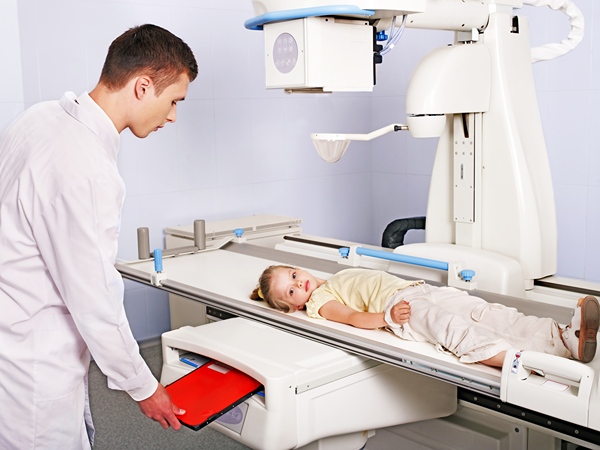When Is a Children’s X-ray Necessary? A Parent’s Guide
Dislocated joints and fractured bones aren’t picky about who they affect. Children aged 11 to 15 are especially prone to the latter, as bone mineralization tends to fall behind at this time of growth spurts. This leaves children with bones that won’t take much force to bend or crack, at least until bone growth finally catches up.
Anytime your child suffers a nasty fall or well-placed hit anywhere in the body, getting an X-ray is a good idea. That said, parents should know that X-rays are a form of radiation—and children are susceptible to it. One X-ray session may not seem harmful, but dozens of such sessions in succession might cause problems.
As such, rely on X-rays only when necessary. As to the situations that necessitate an X-ray, that’s what this article aims to discuss.
The Nuts and Bolts of X-Rays
To understand when an X-ray is necessary for your child, you first need a clear idea of how such tests work. X-rays are in the same high-energy grouping of the spectrum as ultraviolet (UV) and gamma rays. Whereas UV radiation can only penetrate up to the deepest layer of the skin, X-rays can reach up to the bones thanks to their shorter wavelength.
You can look up more information on how X-ray tests are done, but the gist is that the X-ray image everyone’s familiar with is produced when bones absorb the radiation. Calcium, the primary mineral in the human skeleton, has the highest atomic number among the other minerals in the body, allowing the bones to show up most prominently in an X-ray image.
Despite a high energy output, X-rays are one of the least intense sources of radiation. A single chest X-ray outputs 0.1 millisieverts (mSv) of radiation. By comparison, the earth your children stand, sit, or lie down on emits 0.21 mSv annually, and people in Denver are subjected to 0.8 mSv of cosmic radiation also annually.
So why are doctors cautious about overusing X-rays? As mentioned earlier, children are susceptible to ionizing radiation from medical or pediatric imaging, of which X-rays are one example. Too many X-ray tests across too short of a timeframe can quickly add up, increasing children’s risk of getting cancer or non-cancerous diseases later in life.
The good news is that today’s X-ray machines are capable of delivering quality imaging with less radiation. Still, authorities continue to advise doctors and healthcare professionals to use as little radiation as possible when screening patients under 21.
Justifying Undergoing an X-ray

When Your Doctor Says So
The most common scenario that endorses undergoing an X-ray is when the doctor or physician deems it necessary to deliver an accurate diagnosis or treatment. In most cases, a doctor’s referral is required before the child undergoes the procedure.
A consultation with a pediatrician before an X-ray is essential for several reasons. For starters, it’s where the medical professional delves deep into the nature of the young patient’s condition. Pain from a hit in the arm or leg may reveal an underlying condition that may be news to the parent and child.
The Food and Drugs Administration (FDA) advises healthcare professionals to reserve X-rays and other forms of diagnostic imaging for last. Instead, they may do the following first:
- Gauge if an examination is necessary to get to the truth of the matter
- Check the patient’s medical imaging history for any existing records
- Consider tests that use far less or no radiation, such as ultrasound or magnetic resonance imaging (MRI)
As a parent, you’d want to ask your doctor and the referred imaging facility as many questions as possible. Always assume that the risks of pediatric X-rays are genuine.
When The Symptoms Are Visible
X-rays are the primary means of getting a complete picture of the source of excruciating pain from an injury. However, doctors can tell when the injury involves a dislocation or fracture through several telltale symptoms, such as:
- The shape of a limb out of place or protruding
- Bruising or discoloration in the affected area
- Having difficulty moving or placing weight on the limb
- Intense and unbearable pain, accompanied by swelling
While the doctor will still require further information, these signs almost guarantee an X-ray examination to follow. They need to see how severely the bone has moved out of its alignment or how deep the fracture is.
Sometimes, X-rays may not show any visible fractures or signs of damage, especially in the wrist area. In such cases, they may order a more thorough scan of the area through a computed tomography (CT) scan or bone scan. If the doctor suspects fractures in the skull, they may not order an X-ray anymore and proceed to a CT scan immediately.
When Other Diseases Are Suspected
X-rays aren’t limited to fractures and other bone and joint problems. They can also be helpful in producing images of diseases affecting certain internal organs, of which three common procedures come to mind.
The first is a chest X-ray, which targets the internal organs within the ribcage, such as the heart and lungs. Its results can help assess a range of heart and lung problems, from foreign bodies inhaled by accident to pneumonia.
Another is an abdominal X-ray, which is used to spot the source of pain in the abdomen and lower back, as well as nausea and vomiting. Conditions that can be diagnosed via this procedure include ingested foreign objects, intestinal blockages, and gallstones.
Finally, there’s the dental X-ray, which produces a two- or three-dimensional image of the jawbone to find problems with the child’s teeth. This is ideal for diagnosing dental conditions like impacted wisdom teeth or root decay. Given that their teeth have a lot of growing to do, children can expect to undergo dental X-rays more often than adults.
When The Doctor Asks for A Follow-Up
Follow-up X-ray exams are relatively common, as doctors need to monitor the progress of the child’s recovery from a disease or injury. As for when the follow-up can be done, the interval can be several weeks or months from the last one. Sometimes, the doctor may not ask for a follow-up at all.
Again, this will require a written referral from the pediatrician, especially if they expect the patient to undergo more X-ray tests than usual.
Preparing Your Kid
An X-ray exam needs no special preparation most of the time. However, at this point, you probably can’t help but need to ascertain your child’s well-being during the exam, which is understandable. At the end of the day, X-rays are still a form of radiation that must be used wisely to prevent complications in the long term.
As such, when your doctor recommends that your kid undergo an X-ray, here are several precautions and preparations worth doing.
Roleplay the Procedure with Your Child
X-rays are a prevalent trope in cartoons, with one common gag involving an unlucky soul getting shocked so badly that their entire skeleton becomes visible. Of course, that’s not how X-rays work, and your child may be none the wiser. Playtime is a great way to set their expectations and ensure a smooth exam.
Consider a roleplay X-ray setting where your child plays the patient getting scanned. Using toys and other media you can purchase at a toy store or online, you can teach your child how to behave during the procedure. Printouts of the part of the child’s body to be exposed to X-rays can be helpful guides.
This is a good idea for children undergoing an X-ray for the first time or those who have done so but aren’t too keen on having to undergo another one.
Dress Up Your Child in Comfy Clothes
Loose clothing is preferable in the radio imaging room that houses the X-ray machine. This can help your child stay calm and comfortable during the procedure, which won’t take longer than 15 minutes on average. Depending on the target part of the body, the radiologist may ask your child to wear a gown for the exam.
Avoid getting your child to wear anything that can affect the imaging results, such as metal accessories. If they insist on wearing accessories, make sure to take them off and hold onto them until the exam is finished.
Be advised that the radio imaging room will be cold, something your child may need to bear for the duration of the exam. The room is kept that way because X-ray machines and other equipment emit lots of heat when in use.
And that’s about it. Unlike a CT scan or ultrasound, there’s no need for your child to fast several hours before an X-ray. After the exam is done, they can proceed with their usual routines and even enjoy any meal they like. They mostly won’t feel a thing, all thanks to advances in diagnostic imaging technology over the decades.
Wrapping Up
Despite X-rays being one of the safest means of assessing bone and organ health, it’s important not to underestimate their potential side effects. Always seek professional advice from your child’s doctor or pediatrician to determine whether or not your child needs an X-ray. If any side effects manifest, contact your doctor immediately.






